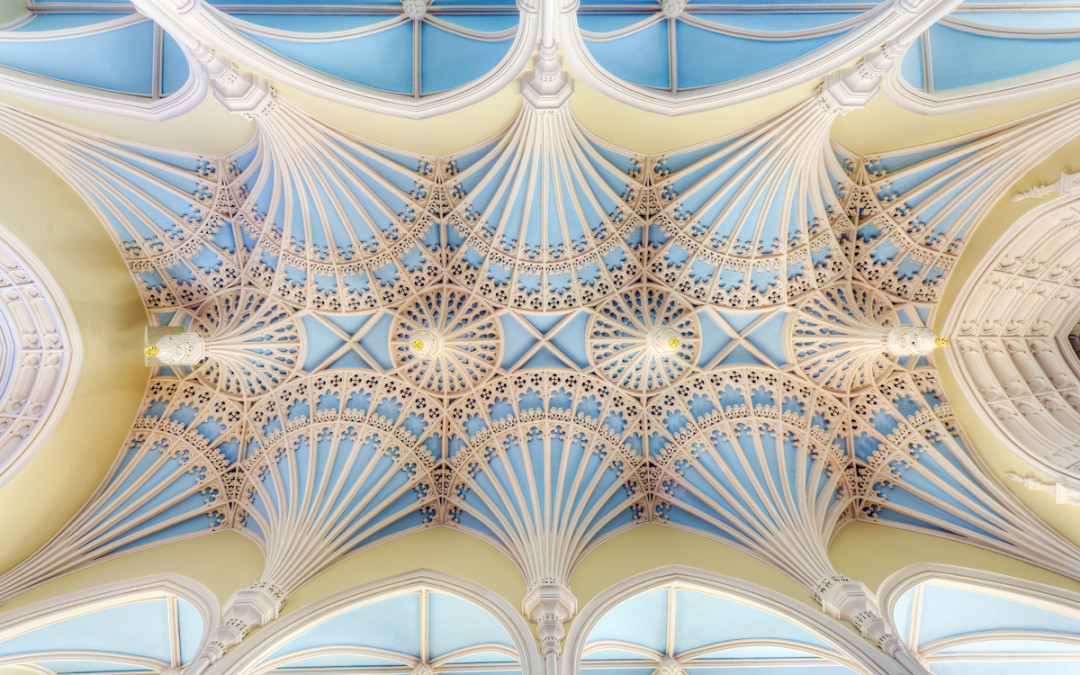To see the full image gallery of the Unitarian Church click here.
The Unitarian Church on Archdale St. is one of the most intriguing buildings in the city to most people who see it with regularity and don’t know anything about it. It is Charleston’s second oldest church building having been begun in 1772. Construction of the church was interrupted by the British occupation of Charleston, during which time it is said the British used the incomplete church as a stable for their horses. After the British left in 1782 construction resumed and by 1887 regular services were held in the structure. At this time the church was the Second Independent Church and was an offshoot for the Circular Church.
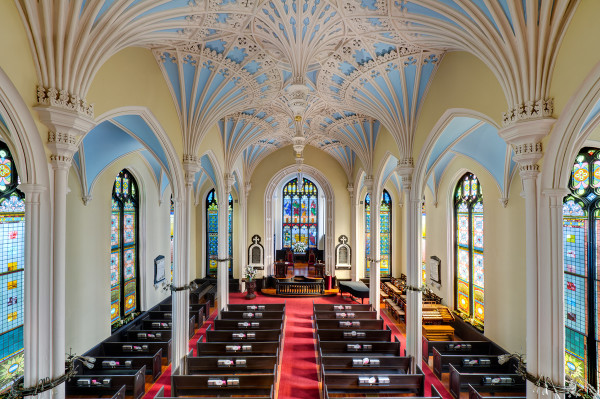
In 1817 several members of the church converted to Unitarian along with Minister Forster. Reverend Forster continued for a while until illness forced him out of the ministry. In 1819 Harvard University sent Samuel Gilman to the church to serve a as pastor. After 4 sermons Gilman was unanimously elected the new pastor of the church. Gilman was a Harvard graduate and was responsible for writing “Fair Harvard”. Gilman’s wife Caroline published the first children’s magazine in the country called The Rosebud (later called The Southern Rose). Samuel Gilman was pastor until his death in 1858. The heavy Gothic monument in the front of the graveyard is a memorial to him and Caroline.
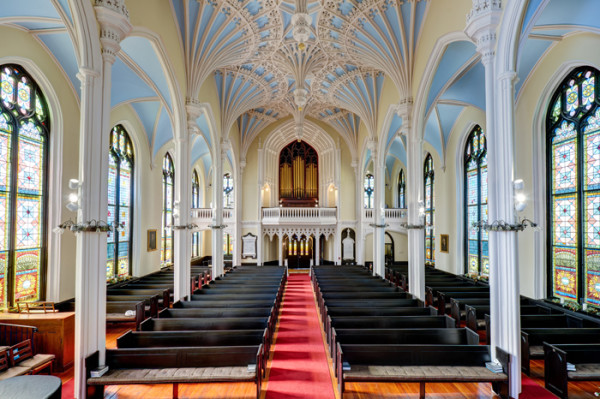
During Gilman’s tenure funds were raised to remodel the old Georgian style building into something a bit more contemporary. They chose the design of College of Charleston graduate Francis D. Lee (whose middle name was actually Dee, but used the initial “D” instead). Lee was also a member of the church. Lee’s design is one of the truly unique designs in Charleston. He kept the four original walls of the 1774 church but almost everything else changed. The Perpendicular Gothic style in Lee’s ambitious plan created heavy flying buttresses for the front, a crenellated steeple with finials adorning the steeple. From the outside the church somewhat resembles a castle tower. But even more was to come inside the church. Here Lee used the Henry VII Chapel at Westminster and the as inspiration. The vaulted ceiling and fan tracery have no equal in Charleston or arguably in the southeast. Lee’s design is in the Pantheon of Charleston architecture and forged a path of success for the architect earning a spot as E.C. Jones ‘ partner. Jones had been one of Lee’s instructors at the College and helped put the finishing touches on the church after the construction had begun. Together as Jones and Lee they designed or remodeled some of the most important buildings in Charleston history. Magnolia Cemetery, The Orphan House, Citadel Square Baptist, 1 Broad St, and the 3rd Circular Church (Destroyed by fire 1861) were all Jones and Lee designs. Lee himself designed two other very noteworthy building in the city in The Farmer’s and Exchange Bank on East Bay St, and New Tabernacle Fourth Baptist Church (originally St. Luke’s) on Charlotte St.

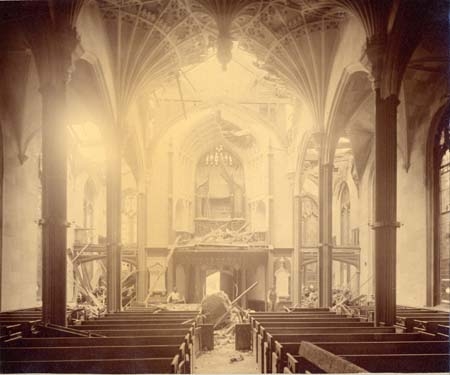
The church escaped damage during the Civil War and even the fire of 1861, with the monstrous fire stopping just short of church property, even destroying the fence, but no harming anything inside the fence. “Not even a crushed rose bud” remarked Caroline Gilman. The church would suffer greatly from the 1886 Earthquake and would take nearly two years to repair. The earthquake on August 31st was a massive earthquake, registering as an X on the Mercalli Scale (estimates vary on the Richter scale intensity, I’ve heard anywhere from 7.0 to 8.5).The steeple lost much of its ornamentation, crashing backwards through the ceiling of the church and destroying the roof. Many feared the building was initially a total loss, but as time passed and panic subsided the building was repaired, though the missing ornamentation on the steeple was not replaced and the rest was stripped away. The steeple today is the repair work of Boston architect Thomas Silloway. The church was repaired with funds donated from Unitarians all over the United States. In 2010 the church underwent another restoration this time in the hands of Charleston architect Glenn Keyes. This restoration repaired the structural integrity of the church and the interior portion was completed under the Save Our Treasures Grant program from the National Park Service. The color was even returned to the original color as discovered during the restoration work.
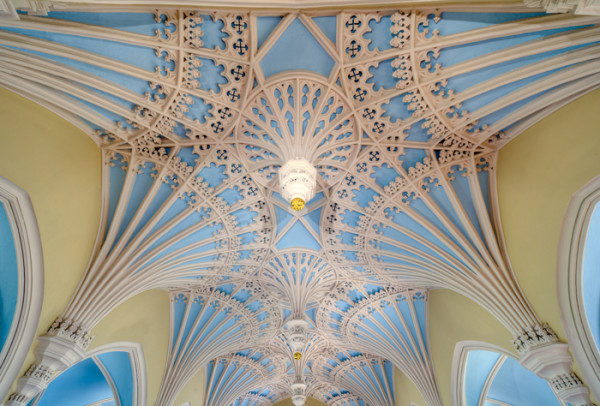
The graveyard surrounding the church is called a Garden of Remembrance and is stunning and truly one of a kind in Charleston. It has an informal garden appearance that makes it very lush, and extremely picturesque. The Graveyard is even used on one of the ghost tours in Charleston in the evening. However despite much talk to the contrary, Edgar Allen Poe’s Annabel Lee is not buried in the churchyard. Lee was a fictional character who’s most credible inspiration was more than likely Poe’s wife. The church is a stop I tell people in Charleston they absolutely must see while in Charleston. It cannot be missed, from the stunning graveyard to the breath taking vaults and tracery it is unmissable!
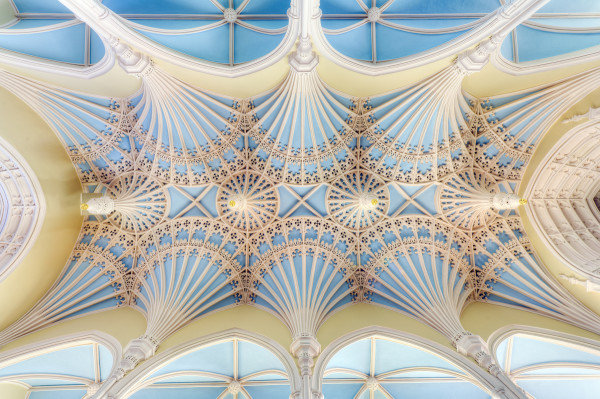
The Unitarian Church is located at 8 Archdale St. Services are Sunday at 11 (except June-September when it is moved up to 10AM) and visiting hours are often held Saturday from 10am till 3PM. The graveyard is open daily from 8AM to 6PM summer and 9AM to 5PM in the winter.
To see the full image gallery of the Unitarian Church click here.
